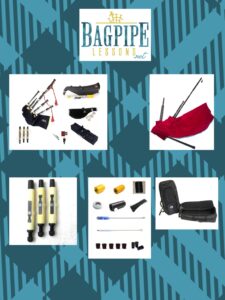 The problem last night, the father of one of my students brought his pipes by for a tune-up. The student is competing in solo competition this weekend at a regional highland games. While working with this student over Skype yesterday, he had expressed to me some trepidation about the upcoming event. I told him that, in my opinion, the purpose of competition is to have a goal and a reason to practice and learn new tunes. I also told him that the judges aren’t going to cuss him out or belittle him if he makes a mistake as they want him to come back for future competitions. I also asked him what he thought the worst thing that could happen in those 5 minutes could be. He then answered his own questions.
The problem last night, the father of one of my students brought his pipes by for a tune-up. The student is competing in solo competition this weekend at a regional highland games. While working with this student over Skype yesterday, he had expressed to me some trepidation about the upcoming event. I told him that, in my opinion, the purpose of competition is to have a goal and a reason to practice and learn new tunes. I also told him that the judges aren’t going to cuss him out or belittle him if he makes a mistake as they want him to come back for future competitions. I also asked him what he thought the worst thing that could happen in those 5 minutes could be. He then answered his own questions.
The “bagpipe tune-up” starts with a “bagpiper tune-up”. Over a period of time, as he plays for more of these, he will gradually start to place and move up in category. He needed to hear that this is a non-threatening situation and that everyone had his best interests in mind. Hence, it seems that sometimes the “bagpipe tune-up” starts with a “bagpiper tune-up”.
When his instrument arrived around 9 pm last night, I took it all apart.
Start with the bag and stocks.We needed to make sure that all of the stocks were seated properly and tight. Since it had been more than 18 months since I initially put them together, I re-taped all of those stocks to make sure they were straight in the seats and properly sealed.
Check all of the “hemped joints”. In my opinion, the joints going into the stocks need to be “hand tight”, meaning it takes both hands to separate them. We then worked on all of the sliders to make sure that they were “finger tight” and didn’t rock in place. If your sliders are loose they will drop when marching or during a sudden movement. We definitely don’t want them to move during a competition solo or while playing with a band.
Make sure that all of the reeds were seated properly. As most makers of drone reeds use “black rosined hemp” at the seats of their reeds, it is a good idea to pull all of that off once in a while and rewind it. In most cases, that hemp becomes compacted and will eventually lead to the reed falling into the bag. When you seat the reed in the bottom of the drone, you should be able to hold bottom section of the drone upside down by the reed. You can even shake it a little. If it is tight there will be no separation. There is nothing more embarrassing then your drone reeds falling into your bag and you losing compression during your set. During this phase is also the time to re-voice your reeds, making sure that the pitch and the volume are uniform. More about that in another post.
What about the cords and cover? Finally, after dressing the pipes with the bag cover, you might go back and make sure that your cords are tight. You should have on hand a package of “wire ties” for this purpose. They can be purchased at any hardware store. When you’ve done all of this, you are ready to go.
How about a regular “maintenance inspection”?By the way, if you play the pipes for money on a regular basis, you should have a regular “bagpipe inspection” as you are only as good as your last performance and shoddy maintenance makes for poor performances. You should also own a good maintenance kit.
